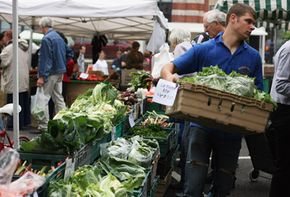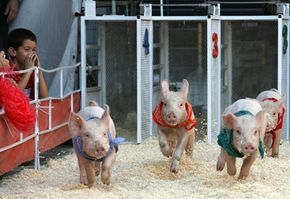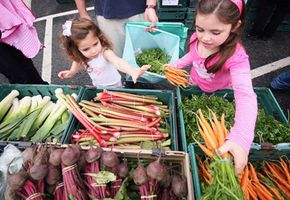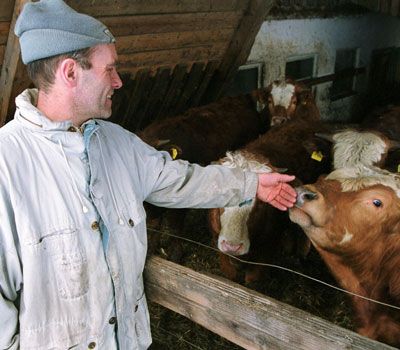While farmers' markets are independent enterprises, the government, specifically the U.S. Department of Agriculture (USDA) plays a supporting role. The Agricultural Marketing Service (AMS) division of the USDA has three key roles in ensuring farmers' markets succeed operationally and financially, including research, outreach, and facility development. AMS also coordinates the farmers' market at the USDA headquarters in Washington, D.C., and supports a handful of other markets at federal offices in other states.
AMS lends a hand to local and state governments and nonprofit agencies by reviewing food market facility plans, from design to renovation and construction, estimating cost and projecting market patronage.
Additionally, AMS acts as an information clearinghouse by researching and reporting on emerging trends in farmers' market operations, practices and marketing strategies, as well as circulating findings to vendors, market managers and any interested parties. With the North American Farm Direct Marketing Association (NAFDMA), AMS supported the establishment of the Farmers Market Coalition (FMC). While NAFDMA goals include helping family farmers increase farm income through the innovative direct marketing ideas (farmer-to-consumer, minus the middleman), the FMC advocates specifically for farmers' markets.
In an effort to increase farmer-to-consumer market opportunities, the Farmers Market Promotion Program (FMPP) was created under the 2002 Farm Bill. The program offers one-year grants, up to $75,000, to eligible farmers, local governments, nonprofit agencies and other entities for establishing, expanding and promoting farmers' markets, roadside stands, CSAs and other farmer-to-consumer direct marketing opportunities.
Recently, FMPP grants have also been used to implement Electronic Benefit Transfer (EBT) cards at vendor stands. EBT cards are the electronic version of food stamps and are provided to low-income families and seniors by the USDA's Food and Nutrition Service (FNS). EBT cards bring fresh, nutritious foods to people on federal assistance -- a relatively untapped market in the farmer-to-consumer business.
There are two federal assistance programs working in conjunction with farmers' markets to provide fresh fruits and vegetables from local farmers to low-income families and seniors. The Women, Infants, and Children (WIC) Farmers' Market Nutrition Program (FMNP) provides special coupons to its participants which are used to buy produce at participating markets. In 2006, 14,259 farmers, 2,896 farmers' markets and 2,136 roadside stands accepted FMNP coupons, resulting in more than $22.4 million in revenue to farmers [source: USDA]. Low-income seniors may be eligible for similar coupons through the Seniors Farmers' Market Nutrition Program (SFMNP). In 2006, 14,575 farmers, 2,911 farmers' markets, 2,323 roadside stands and 260 CSAs accepted SFMNP coupons [source: USDA].
For more information about organic foods and farming, locavores and where to find your local farmers' market, visit our list of resources on the next page.





